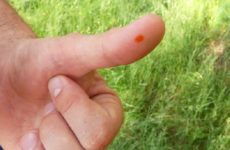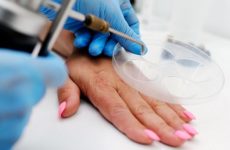Содержание:
- 1 Introduction
- 2 The importance of caring for a build-up after the removal procedure, what happens to the wound?
- 3 How long does the wound heal?
- 4 General rules for wound care, what could be the consequences, what to do when a blister appears?
- 5 How to treat the impact site?
- 6 What is prohibited?
- 7 Possible complications and treatments
- 8 A pigmented spot appeared at the site of the growth
- 9 The growth has reappeared
- 10 Conclusion
Introduction
Sometimes quite unpleasant neoplasms, which are called warts, can appear on the human body. The main reason for their occurrence is the human papillomavirus, which most people on earth have.
Warts cause significant discomfort to a person. They can occur on almost any part of the human body. In addition to physical inconvenience, they also carry an external cosmetic defect.
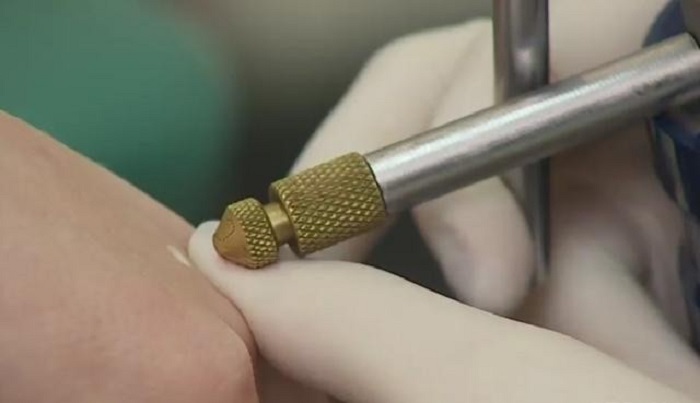
There are several ways to remove warts. One of the most popular ways to deal with warts is cryosurgery.
Cryosurgery – freezing with liquid nitrogen. This type of treatment assumes that a low-temperature substance, in our case nitrogen, is applied to the diseased area.
With this method, the cells freeze, and there is a gradual decrease in neoplasms and cell death. There is no limit to the number of cauterizations. It is possible to use this intervention for at least as long as you live.
The importance of caring for a build-up after the removal procedure, what happens to the wound?
After the nitrogen cauterization procedure, it is necessary to understand the importance of wound care . The skin was seriously damaged. You should follow a number of certain rules, thanks to which you will minimize the appearance of negative consequences.
Daily care will ensure faster healing of the wound. If the principles of care after cauterization are neglected, the processes of wound healing will be much slower.
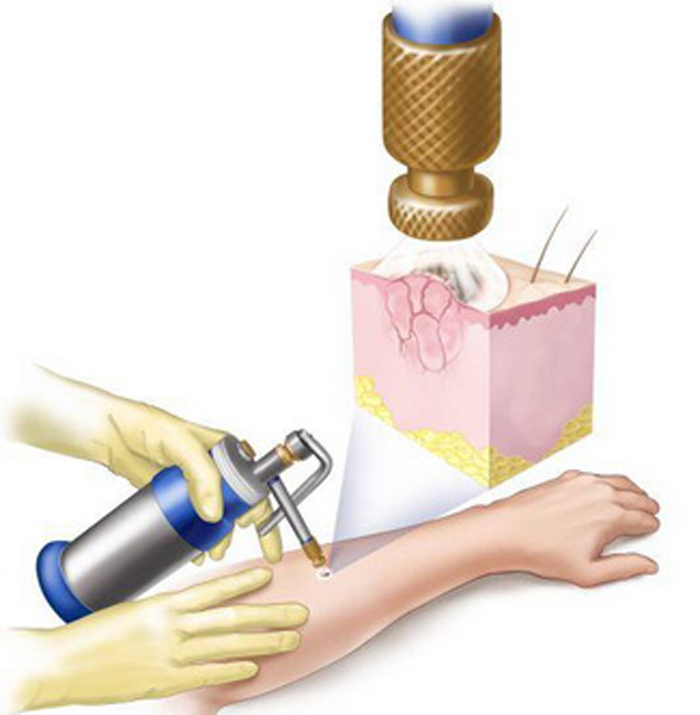
After cauterization, the skin will turn red in a few minutes. The next morning, sometimes some patients develop a blister with fluid inside. The bubble should not be touched, it will go away on its own.
How long does the wound heal?
On average, the final healing of the wound occurs within one month. During the first week, the skin may flake and redden. If a reddish bubble appears at the site of the wound, then this is not a very good sign.
This means that during the procedure, nitrogen touched the blood vessels. Recovery may take a couple of weeks longer than usual. If the bubble is white or pink, then nothing terrible has happened.
General rules for wound care, what could be the consequences, what to do when a blister appears?
The rules for caring for a wound after burning a wart include the following:
- It is necessary to follow all the recommendations of the doctor who performed the procedure.
- If you have any questions, contact the institution where the burning procedure was carried out.
- Do not close the access of fresh air to the resulting wound. It cannot be sealed with adhesive tape.
- For two weeks, you should not be in the open sun. Under the ban tanning in the solarium.
- Follow the basic rules of personal hygiene.
- Try not to touch the wound with your hands so that mechanical damage does not occur.
- Perhaps the use of a bit or a gauze bandage. A prerequisite is that there is no strong contact with the wound.
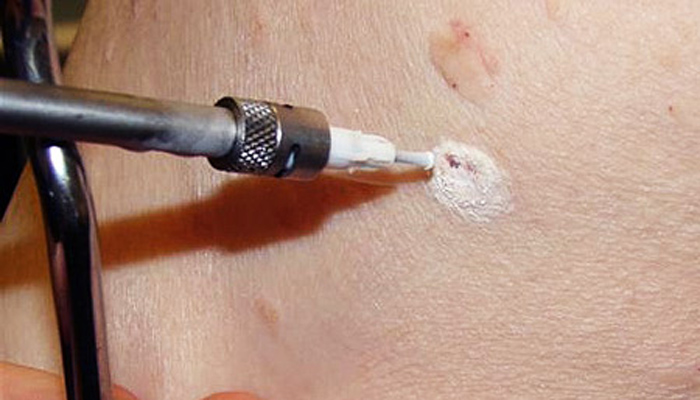
How to treat the impact site?
There are several steps in postoperative wound care.
- Firstly, three times a day it is necessary to apply an antiseptic agent, which the doctor will prescribe. Usually it is the antibacterial ointment Levomekol, which helps a lot in wound healing. It must be applied three times a day.
- Secondly, it is recommended to apply oil solutions of vitamins A and E to the skin. They help the skin regain elasticity.
In addition to the external action of creams and ointments, your body needs nourishment from the inside. Complex products containing vitamins, minerals, various trace elements in their composition will contribute to a speedy recovery.
What is prohibited?
After removing the wart, it is prohibited:
- Take hot baths and go to the sauna, especially in the first week after the procedure.
- Independently remove the crust from the wound. This can lead to the addition of another infection and the occurrence of an inflammatory process.
- Apply various cosmetics to the wound. Do not use foundation, corrector, powder in order to mask the wound.
- Contact with any detergents. This will lead to inflammation in the wound area. If the removal took place on the palms, it is imperative to wear rubber gloves when washing dishes.
- Visit the pool and water park. Chlorinated water will irritate the wound.

Possible complications and treatments
Unfortunately, after removing a wart with liquid nitrogen, some complications may occur.
What to do if it is swollen and a blister appears?
After the procedure, a blister may form at the site of the wart. Do not worry and fall into a panic state.
This option is considered the norm. The most important thing is to handle it very carefully and not injure the bubble that has appeared. It is necessary to treat this place with salicylic alcohol within 7-10 days.
After the treatment, it is necessary to smear this place with any moisturizer. This treatment is recommended to be carried out 2 times a day. It is strictly forbidden to open the bubble yourself.
It will open itself within two weeks. If the blister increases in size and causes significant discomfort, you should consult a doctor. You may need to take a course of antibiotics.
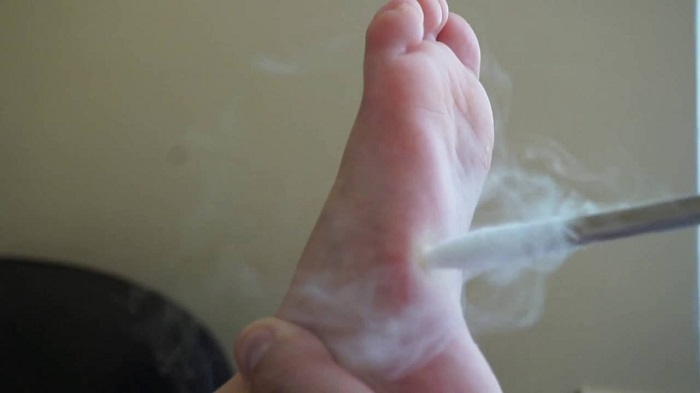
Suppuration of the wound
This kind of complication is rare. A wound that has not yet healed may be accompanied by pain and discharge of pus. If this cannot be avoided, you should definitely consult a doctor. Treating a festering wound without medical advice can be very dangerous.
In such cases, wound treatment with furatsilin, potassium permanganate or hydrogen peroxide is prescribed. When suppuration of the wound occurs, the inflammatory process begins, and surgical intervention may be required.
A pigmented spot appeared at the site of the growth
If you are the owner of sensitive skin, then there is a risk of pigment spots.
Also, pigmentation can appear if a person does not follow the rules of care and exposes the wound to direct sunlight.
Usually the spots disappear within one month. In exceptional cases, it may remain on the skin. But over time, it will gradually brighten and possibly go away, or remain barely noticeable.
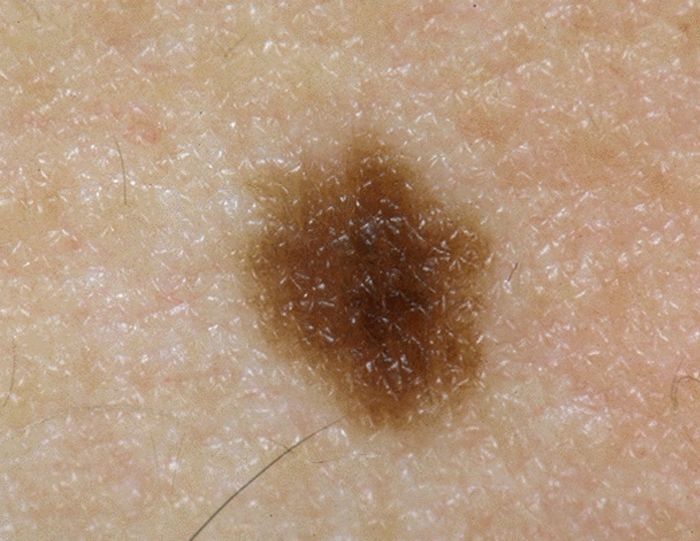
The growth has reappeared
It must be remembered that by removing the wart, you have not solved the problem as a whole. After all, if this kind of neoplasm appears on your skin, it means that HPV is present in the body.
To suppress the activity of this virus, complex therapy is needed, which includes taking antiviral drugs and increasing human immunity.
Conclusion
Removing warts with liquid nitrogen is a great way to say goodbye to this scourge. Before deciding to take this step, you should carefully choose a clinic where you will undergo the procedure and pass a number of specific tests.
Nevertheless, it is not worth leaving the course of this disease to chance. After all, there is a high probability of the development of warts into a malignant tumor.
Be sure to seek the advice of doctors if the wart changes its color, size, swells. If the wart is constantly in contact with clothing, rubs against it, then it must be removed.
This method of treatment is carried out in a hospital under the strict supervision of a doctor. In the future, the wound is treated at home.
The wound should be treated only with those medicines that the doctor has prescribed for you. Do not get involved in self-medication and traditional medicine. Mostly there are positive reviews after using this procedure.


